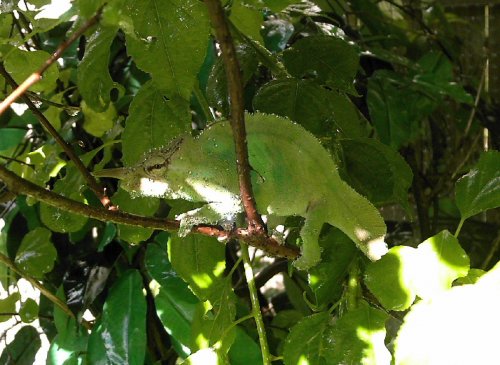After pricing supplies to build my own Cham Home, I think I've decided on the 175 Gallon Reptarium, it measures 30"x30"x48" Which should be a good start for a home, I'm still looking at options for water/humidifying, I'm planning on building a drip system with drip irrigation supplies and will work off a timer, I'll have to see what the average humidity is and go from there with humidifiers and misters n what not, my main question is about lighting...
I'm interested in Montiums and Quadricornis, if I don't have those options, I might end up with Jacksons I know the temps required aren't too high nor is lighting, what lighting do you guys recommend? I'm planning on a possible Hanging Pothos and a Schefflera for foliage and it'll be heavily foliated for good hiding for my animals, but I don't know how much lighting I should go with, I don't want to over do it or under do it, I know naturally filtered light through the plants is desirable...maybe others who are working with these species can snap some photos n give some words of advice?
Thanks In Advance,
Chris
I'm interested in Montiums and Quadricornis, if I don't have those options, I might end up with Jacksons I know the temps required aren't too high nor is lighting, what lighting do you guys recommend? I'm planning on a possible Hanging Pothos and a Schefflera for foliage and it'll be heavily foliated for good hiding for my animals, but I don't know how much lighting I should go with, I don't want to over do it or under do it, I know naturally filtered light through the plants is desirable...maybe others who are working with these species can snap some photos n give some words of advice?
Thanks In Advance,
Chris








